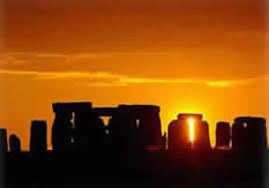Midsummer madness seems an appropriate phrase when looking at the British folklore surrounding this time of year. Our ancestors were particularly interested in Midsummer Day when the sun was at its peak and each day after that, the sun became weaker and the people less secure. Their crops were almost ready for harvest but the dark half of the year was fast approaching and the need to propitiate their beloved Gods was strong.
Whilst no-one really knows the purpose of Stonehenge and its like, and can and will speculate as to the builders, no-one can deny the alignment of the stones in relation to Midsummer sunrise, in particular, the Heel Stone. Modern day Druids and pagans of various persuasions gather there still to mark the event with celebrations and drumming in praise of the sun. And on Midsummer’s Eve bonfires are still lit on the hilltops of Cornwall and other parts of the West Country and Wales, to ‘call in’ the sun. We know why the days are going to get shorter, and we understand the path that the sun travels throughout the year but still there are pockets of society that feels the magic and mystery of this important time of year. Some say it’s living in the past, some say it’s harmless escapism, but there can be no denying the feeling of awe and mystery when witnessing the sunrise over the Heel Stone or topping one of the other stone circles dotted around our landscape.
So to whoever built Stonehenge and for whatever purpose – Cheers!

